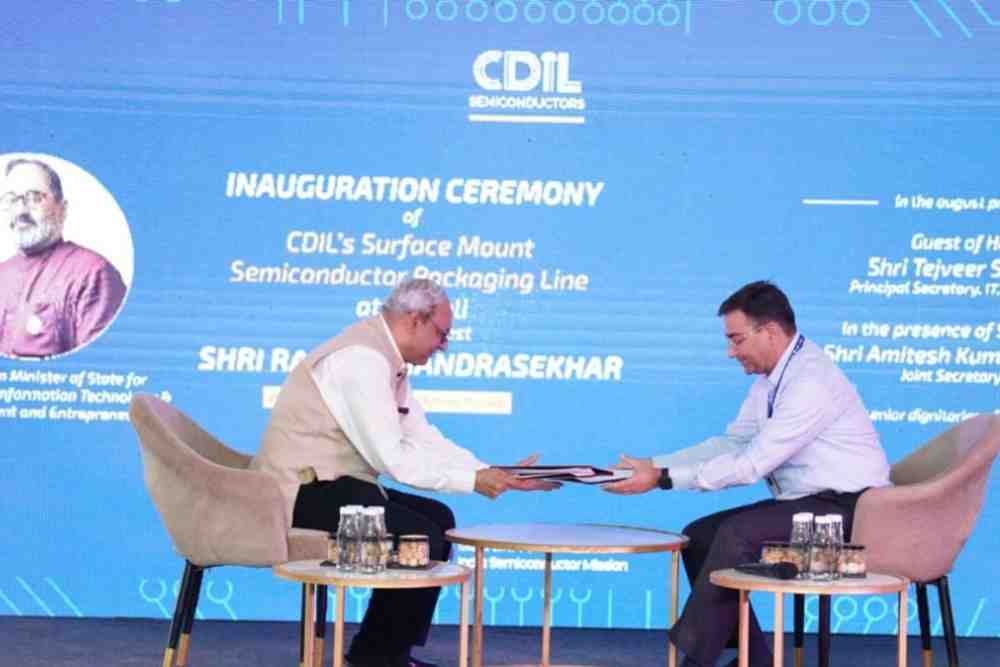In a groundbreaking move for the Indian electronics industry, CDIL, the electronic component manufacturer, has achieved a historic milestone by becoming the first company in India to venture into the production of Silicon Carbide (SiC) semiconductors. This leap into SiC technology marks a significant development in high-power-consuming technology products and serves as a testament to CDIL’s commitment to technological innovation.

Pioneering SiC Exportation to Global Markets
On the sidelines of the launch of CDIL’s state-of-the-art surface mount semiconductor packaging line, Pankaj Gulati, the Executive President and Chief Operating Officer of CDIL, shared the remarkable news. CDIL has embarked on the journey of exporting SiC components to key international markets, including China, the United States, Europe, and Australia. In his words, “We are the first company in India to have initiated the manufacturing of Silicon Carbide semiconductors, and we have already commenced shipping them to China, the US, Europe, and Australia.”
Expanding Horizons: CDIL’s Strategic Moves
CDIL’s commitment to innovation and growth extends beyond SiC production. The company operates cutting-edge manufacturing facilities and a reliability lab in Mohali and Delhi, with a distinct focus on serving industries such as automotive, defense, and aerospace. CDIL’s dedication to these sectors has made it a cornerstone of India’s electronic component manufacturing landscape.
Government Support Fuels CDIL’s Expansion

The government’s support, under the Scheme for Promotion of Manufacturing of Electronic Components and Semiconductors (SPECS), has played a pivotal role in CDIL’s expansion journey. This support has enabled the company to initiate the first phase of SiC production, targeting 50 million SiC components, with plans to scale up to an impressive 100 million devices.
Enhanced Capacity for Innovation
With the addition of new assembly lines, CDIL has substantially increased its total capacity to an astounding 600 million electronic components annually. This expansion paves the way for CDIL to contribute significantly to India’s semiconductor manufacturing ecosystem.
Looking Ahead: Future Phases and Global Reach
Pankaj Gulati revealed that CDIL’s future phases will also receive support through government schemes, including the SPECS scheme and the India Semicon Mission, which offers substantial incentives. This strategic approach aligns with CDIL’s vision of strengthening both the domestic and international fronts. In fact, as local manufacturing gains momentum, CDIL’s export share has decreased from 60-65% to 40% of total revenue.
Collaborative Endeavors to Propel Indian Semiconductor Industry
CDIL, in a historic move, entered into an agreement with the Semi-Conductor Laboratory (SCL) during the event. This collaboration aims to transform Mohali into a comprehensive semiconductor hub within India. The Ministry of Electronics and IT (MeitY) envisions SCL as a premier research and development center for semiconductor components, fostering a dynamic ecosystem for semiconductor manufacturing and assembly in Mohali. This partnership between CDIL and SCL holds the promise of ushering in indigenous chip manufacturing for the global market.
SiC Devices: The Future of CDIL
Prithvideep Singh, CDIL’s General Manager, shared the company’s ambitious plans to add an additional capacity of 100 million devices in the coming 12-18 months. He acknowledged the challenges associated with manufacturing SiC devices at scale but affirmed CDIL’s dedication to mastering this technology. CDIL is strategically targeting sectors such as electric vehicles, solar energy, and power electronics with its SiC offerings, demonstrating its commitment to sustainability and innovation.
In conclusion, CDIL’s pioneering efforts in SiC semiconductor production, coupled with strategic collaborations and government support, position the company as a frontrunner in India’s semiconductor manufacturing landscape. As CDIL continues to innovate and expand, it not only contributes to India’s technological growth but also sets an inspiring example for the global electronics industry.
